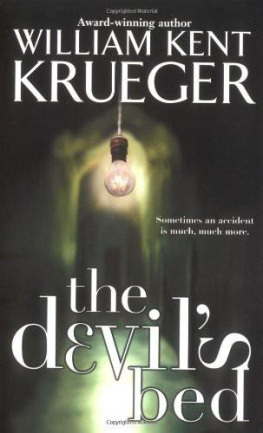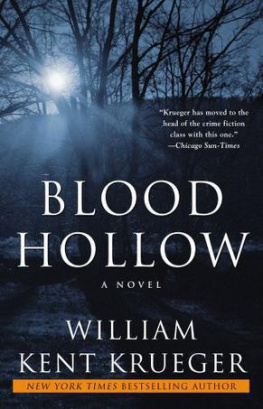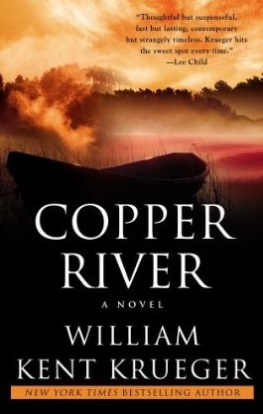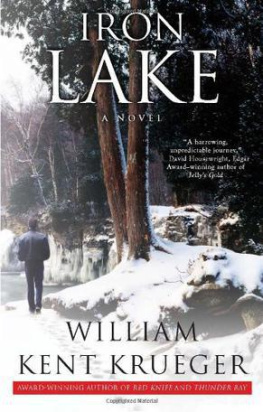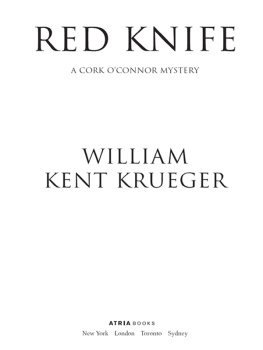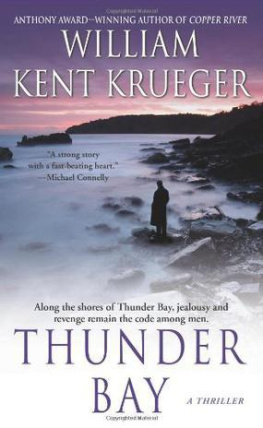Amazon.com Review
Penzler Pick, March 2001: William Kent Krueger writes the kind of novels mystery lovers love to read: well-written, both character- and plot-driven, with tense scenes and surprise endings. Purgatory Ridge is the third in his series starring Corcoran "Cork" O'Connor, half white, half Ojibwe, who is the sometime sheriff of Aurora, a small town in the North Woods of Minnesota. What is particularly refreshing about Cork O'Connor is that, unlike the portrayal of many private investigators and cops in literature, he is a troubled man with a troubled marriage. He and his wife, Jo, have been through hard times, and although there is plenty of love between them, those hard times often surface and impact investigations and decisions they make regarding their careers. As the story begins, Cork is no longer sheriff, but just has to help investigate when a bomb explodes at the lumber mill run by wealthy industrialist Karl Lindstrom. The bomb kills an Ojibwe Indian who, like many of that nation, objects to the tearing down of the trees in that area, especially those considered sacred by the Ojibwe.
In a parallel story, John LePere, half Indian, half white, festers. As the only survivor aboard the Alfred M. Teasdale when she went down in Lake Superior, he thinks about the death of his shipmates, especially his brother. When it is suggested to him that the sinking of the Teasdale may not have been an accident, LePere is pulled into a plot to avenge the deaths. Grace Fitzgerald, heir to the line that owned the Teasdale, happens to be married to Karl Lindstrom. Add the eco-warriors who have come in from other parts of the country to stop the logging, and you have a potent mix of high adventure and skullduggery. Purgatory Ridge is a fine introduction to Krueger and doesn't require that you first read the earlier two books. --Otto Penzler
From Publishers Weekly
Krueger's page-turner revisits Cork O'Connor, the part-Irish, part-Anishinaabe/Ojibwe ex-sheriff of Aurora, Minn., a tiny lumber town on the edge of the Superior National Forest, whose exploits were depicted in Boundary Waters. This narrative opens with a bang, as Karl Lindstrom's lumber mill explodes in the early morning hours, killing Ojibwe elder Charlie Warren. The local Native Americans are up in arms over Lindstrom's plan to cut down Our Grandfathers, a grove of old-growth white pines sacred to tribal lore. Outside conservationists have also descended on the town, eager to save the 300-year-old trees. When a person identifying himself as the Eco-Warrior, soldier of the Army of the Earth, claims responsibility for the bombing, the Native Americans are suspected of collusion as Cork's wife, Jo, attorney for the tribe, protests their innocence. Cork had lost his job as sheriff two years before, largely because of inflammatory editorials by Helm Hanover, publisher of the local newspaper, but he cannot stay uninvolved in this case. The quest to identify the Eco-Warrior bomber ultimately focuses on a young outsider, Brent Hamilton, and his zealous mother, who was crippled in a similar bombing. But the number of suspects widens to include Hanover, rumored to be the commander of the secret militant Minnesota Civilian Brigade, and John LePere, lone survivor of the Alfred M. Teasdale, a freighter that sank on Lake Superior six years earlier, drowning his brother, whose body has never been found. Two kidnappings occur. Karl Lindstrom's wife, Grace Fitzgerald, novelist and daughter of the man who owned the freighter, is abducted, and Cork's wife and six-year-old son are also taken as the Eco-Warrior demands $2 million for their safe return. The plot comes full circle as credibly flawed central characters find resolution. Despite some histrionic plot devices, Krueger prolongs suspense to the very end.
Copyright 2001 Cahners Business Information, Inc.
Contents
ACKNOWLEDGMENTS
I discovered the heart of this book because of Catherine OGeay. She shared with me the story of her father, Albert Whoeme, who was among the crew lost in the sinking of the Daniel J. Morrell. Kaye, I owe you much.
Several good men generously offered me their expertise and advice regarding issues of law enforcement. Thanks to Agent Raymond DiPrima of the Minnesota Bureau of Criminal Apprehension; to Supervisory Special Agent Fred Tremper of the Minneapolis Field Office of the Federal Bureau of Investigation; and to Ken Trunnell, who has many years of experience across many levels of law enforcement.
I am indebted to Dave Loomis, who described to me in such evocative detail his dives to the wrecks in Lake Superior that I was able to accompany him to the lake bottom several times without ever leaving my armchair.
My friends and colleagues of Crme de la Crime, who help me enormously in unraveling the mysteries of mystery writing, always deserve special mention. They are Julie Fasciana, Scott Haartman, Betty James, Michael Kac, Jean Miriam Paul, Susan Runholt, Anne B. Webb, and, especially, Carl Brookins, who is our heart and our fire.
I am blessed with an agentJane Jordan Brownewise in the ways of this complex business. And I am incredibly fortunate to have had in the past year the editorial guidance of Jane Cavolina and George Lucas. Not only are they savvy, but they are charming as well.
I would be remiss without thanking Megan Doc Gunnar for her support and encouragement over the course of many years.
To the Ojibwe Anishinaabe people, upon whose territory I timorously trespass: I thank you for your generosity of spirit; I envy your rich heritage and traditions; and I admire your perseverance in the face of so much ignorance and intolerance.
For their generous financial support as I developed as a writer, I would like to thank the McKnight Foundation, the Bush Foundation, and the Minnesota State Arts Board.
Finally, I am ever so grateful to the St. Clair Broiler, whose neon flame has found a place on the historical registry. From the bottom of my heart, I give thanks to Jim Theros and Elena Vakos, to all the staff who tolerate my long presence every morning and who keep my coffee cup filled, and to the regulars who tell me their stories and tell me I am free to use them.
AUTHORS NOTE
This book is fiction. At its heart, however, is a true story.
On November 29, 1966, while northbound on Lake Huron and making its final passage of the season, the ore freighter Daniel J. Morrell encountered a horrific gale. Battling winds of sixty-five miles per hour and seas with twenty-five-foot waves, the old carrier suddenly broke apart and sank. Of her crew of twenty-nine men, only three managed to make it aboard a small pontoon life raft. Within twelve hours, two of the men were dead, victims of injury and of exposure to both the frigid water of the great lake and air temperatures that hovered around freezing. One man endured. Dressed only in his peacoat and underwear, watchman Dennis Hale drifted for nearly thirty-six hours before he was spotted by a Coast Guard helicopter and airlifted to a nearby hospital.
In 1996, Hale published Sole Survivor, his account of the sinking, of his remarkable experiences adrift on that tiny raft in angry water, and of the effect the incident has had on his life since then. It is a book worth reading.


